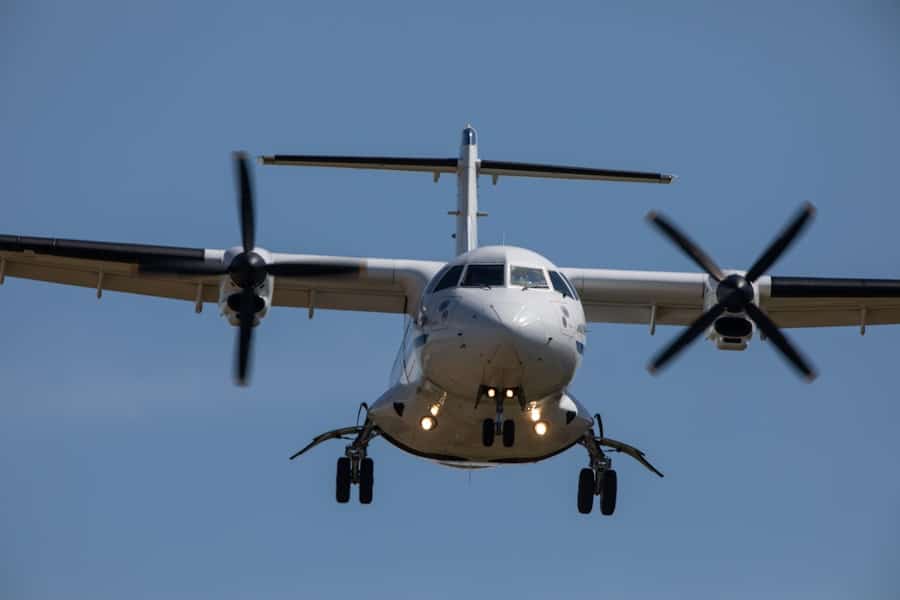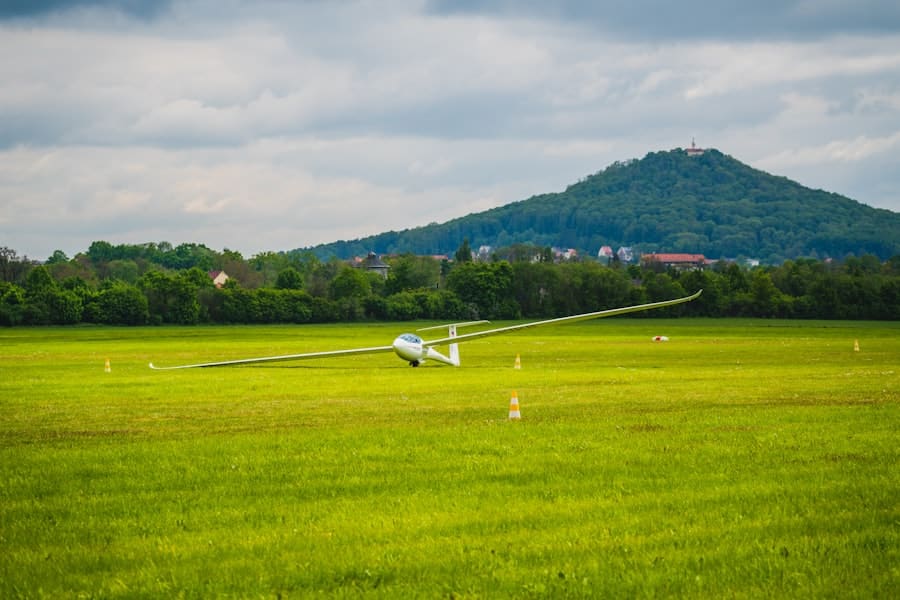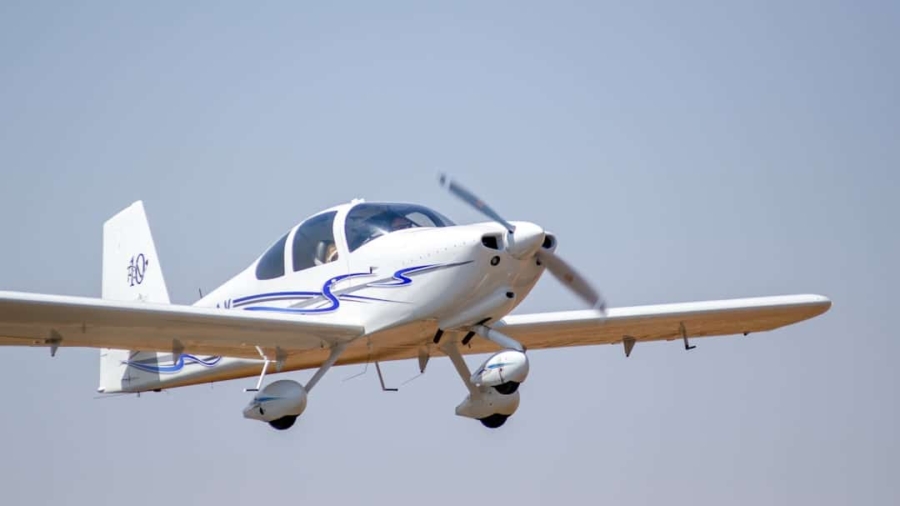Electric aviation technology represents a transformative shift in the aerospace industry, promising to redefine how we think about air travel. As concerns about climate change and environmental sustainability intensify, the aviation sector is under increasing pressure to reduce its carbon footprint. Traditional aircraft, primarily powered by fossil fuels, contribute significantly to greenhouse gas emissions.
In response, engineers and innovators are turning to electric propulsion systems as a viable alternative. This technology harnesses electricity, often generated from renewable sources, to power aircraft, thereby minimizing environmental impact while maintaining efficiency and performance. The evolution of electric aviation is not merely a theoretical concept; it is a burgeoning field that has seen significant advancements in recent years.
Companies like Pipistrel, Airbus, and Boeing are investing heavily in research and development to bring electric aircraft from the drawing board to the skies. The integration of electric propulsion systems into aviation is not just about replacing engines; it involves a comprehensive rethinking of aircraft design, aerodynamics, and operational protocols. As this technology matures, it holds the potential to revolutionize air travel, making it cleaner, quieter, and more accessible.
Key Takeaways
- Electric aviation technology is rapidly advancing and gaining popularity in the aviation industry.
- Electric aircraft offer advantages such as lower operating costs, reduced emissions, and quieter operation.
- Electric propulsion systems use electric motors and batteries to power the aircraft, eliminating the need for traditional fuel.
- Battery technology for electric aircraft is improving, with advancements in energy density and safety.
- Solar-powered aircraft and electric vertical takeoff and landing (eVTOL) aircraft are innovative concepts that are being developed in the electric aviation industry.
- Infrastructure for electric aviation, including charging stations and battery swap facilities, is being developed to support the growing electric aircraft market.
- The future of electric aviation technology looks promising, with continued advancements in battery technology, propulsion systems, and aircraft design.
Advantages of Electric Aircraft
Reduced Operational Costs
One of the most compelling aspects of electric aircraft is the reduction in operational costs. Electric engines are generally simpler than their internal combustion counterparts, leading to lower maintenance requirements and costs. Electric motors have fewer moving parts, which translates to less wear and tear over time. This simplicity can significantly reduce the total cost of ownership for airlines and operators, making electric aviation an economically attractive option.
Quieter Operations
Electric aircraft can operate more quietly than traditional planes. Noise pollution is a significant concern in urban areas, particularly near airports. Electric propulsion systems produce less noise during takeoff and landing, which can lead to fewer restrictions on flight operations and improved community relations. This quiet operation opens up possibilities for urban air mobility solutions, such as air taxis, which could operate in densely populated areas without disturbing residents.
A Compelling Alternative
The combination of lower operational costs and reduced noise pollution positions electric aircraft as a compelling alternative for both commercial and private aviation.
Electric Propulsion Systems

Electric propulsion systems are at the heart of electric aviation technology. These systems convert electrical energy into mechanical energy to drive the aircraft’s propellers or fans.
However, other configurations exist, including hybrid systems that combine traditional fuel engines with electric motors to enhance efficiency and range.
This approach involves multiple small electric motors distributed across the wings or fuselage of an aircraft rather than relying on a single large engine.
Distributed propulsion can improve aerodynamic efficiency and reduce drag, leading to enhanced performance and fuel savings. Companies like Joby Aviation are exploring this technology in their eVTOL designs, which aim to provide efficient urban air mobility solutions.
Battery Technology for Electric Aircraft
Battery technology is a critical component of electric aviation, as it directly impacts the range, weight, and overall performance of electric aircraft. Lithium-ion batteries have been the dominant choice due to their high energy density and relatively low weight compared to other battery types. However, advancements in battery chemistry are essential for the future of electric aviation.
Researchers are exploring alternatives such as solid-state batteries, which promise higher energy densities and improved safety profiles. The challenge of battery weight is particularly significant in aviation. The weight of batteries must be minimized while maximizing energy storage capacity to ensure that aircraft can achieve practical ranges without compromising performance.
For instance, the Pipistrel Alpha Electro is an electric trainer aircraft that utilizes lithium-ion batteries but has limitations in range due to battery weight constraints. As battery technology continues to evolve, innovations such as lithium-sulfur or lithium-air batteries could potentially offer breakthroughs that enable longer flights and greater payload capacities.
Solar-Powered Aircraft
Solar-powered aircraft represent an exciting frontier in electric aviation technology. These aircraft utilize solar panels to convert sunlight into electricity, which can then be used to power electric motors or charge onboard batteries. The most famous example is Solar Impulse 2, which completed a historic round-the-world flight using only solar energy.
This achievement demonstrated not only the feasibility of solar-powered flight but also highlighted the potential for renewable energy sources in aviation. The integration of solar technology into electric aircraft can significantly extend flight durations and reduce reliance on ground-based charging infrastructure. For instance, solar-powered drones are being developed for various applications, including environmental monitoring and agricultural surveying.
These drones can remain airborne for extended periods by harnessing solar energy during flight, making them ideal for tasks that require long endurance without frequent recharging.
Electric Vertical Takeoff and Landing (eVTOL) Aircraft

Revolutionizing Urban Transportation
Companies like Archer Aviation and Volocopter are at the forefront of developing eVTOL designs that aim to alleviate urban congestion by offering on-demand air taxi services.
Versatile Design and Applications
The design of eVTOL aircraft often incorporates multiple rotors or fans for lift and thrust, enabling them to hover and maneuver with precision. This versatility makes them suitable for various applications beyond passenger transport, including cargo delivery and emergency medical services.
Integrating into Urban Infrastructure
The potential for eVTOLs to integrate seamlessly into existing urban infrastructure presents exciting opportunities for reshaping how we navigate cities.
Infrastructure for Electric Aviation
The successful implementation of electric aviation technology hinges on the development of robust infrastructure to support electric aircraft operations. Charging stations specifically designed for electric planes will be essential at airports and other operational hubs. These charging stations must accommodate the unique requirements of different aircraft types while ensuring rapid turnaround times between flights.
In addition to charging infrastructure, regulatory frameworks will need to evolve to address the unique challenges posed by electric aviation. Air traffic management systems may require updates to accommodate the increased number of eVTOLs operating in urban environments. Furthermore, collaboration between government agencies, private companies, and research institutions will be crucial in establishing standards for safety, efficiency, and interoperability within the electric aviation ecosystem.
Future of Electric Aviation Technology
The future of electric aviation technology is bright yet complex, characterized by rapid advancements and evolving challenges. As battery technology improves and regulatory frameworks adapt, we can expect a gradual integration of electric aircraft into commercial air travel. Major airlines are already exploring hybrid-electric options for regional flights as a stepping stone toward fully electric fleets.
Moreover, the potential for innovation in materials science could lead to lighter and more efficient aircraft designs that further enhance the viability of electric aviation. The ongoing research into sustainable aviation fuels also complements the push toward electrification by providing alternative solutions for reducing emissions in traditional aircraft. As public awareness grows regarding climate change and sustainability issues, consumer demand for greener travel options will likely drive investment in electric aviation technologies.
The convergence of technological advancements with societal needs positions electric aviation as a key player in shaping the future of transportation—one that prioritizes environmental stewardship while enhancing connectivity across the globe.
Innovations in Electric Aviation Technology have been revolutionizing the aerospace industry, with advancements in battery technology and electric propulsion systems. One related article that complements this topic is a review of the game-changing keyword research tool, RankAtom. This tool can help companies in the aviation sector stay ahead of the competition by identifying relevant keywords and optimizing their online presence. To learn more about this tool, check out the RankAtom review.
FAQs
What are some recent innovations in electric aviation technology?
Some recent innovations in electric aviation technology include the development of more efficient electric motors, advancements in battery technology for longer flight times, and the creation of lightweight and durable materials for aircraft construction.
How do electric aviation technologies differ from traditional aviation technologies?
Electric aviation technologies differ from traditional aviation technologies in that they rely on electric power sources, such as batteries or fuel cells, instead of traditional fossil fuels. This results in reduced emissions and lower operating costs.
What are the benefits of electric aviation technology?
The benefits of electric aviation technology include lower operating costs, reduced environmental impact due to lower emissions, quieter operation, and the potential for increased accessibility to air travel in remote areas.
What are some challenges facing the adoption of electric aviation technology?
Some challenges facing the adoption of electric aviation technology include the limited energy density of current battery technology, the need for infrastructure to support electric aircraft charging, and regulatory hurdles for certification and integration into existing airspace systems.
What are some companies leading the way in electric aviation technology?
Companies such as Airbus, Boeing, and startups like Joby Aviation and Lilium are leading the way in electric aviation technology, developing innovative aircraft designs and propulsion systems to advance the industry.

